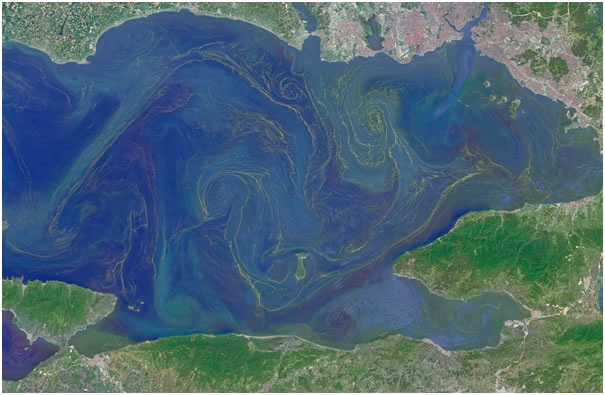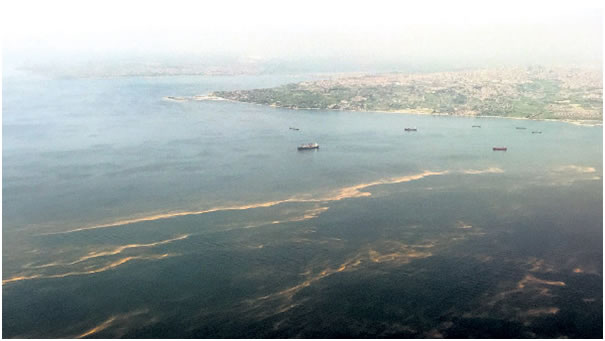Observations page 2
The seasonal variability in the fresh water input to the Black Sea modulates the water transport through the straits, while wind forcing or net flux variations are capable of blocking and reversing the exchange flows in either direction (Latif et al., 1991; Oğuz et al., 1990; Beşiktepe et al., 1994; Özsoy et al., 1998; Book et al., 2014). The complex topography of the straits and property distributions have resulted in hydraulic controls to be anticipated in theBosphorus and Dardanelles Straits(Özsoy et al.,1998; Özsoy et al.,2001), which only partially could be demonstrated at the northern sill of the Bosphorus by measurements (Gregg and Özsoy, 2002), confirmed and extended by recent experiments (Dorrell et al., 2016). Since then hydraulic controls have been shown to exist at the southern contraction-sill complex as well as the northern sill by modeling, confirming a unique "maximal exchange" regime adjusted to the particular topography and stratification (Sözer and Özsoy, 2017a; Sannino et al., 2017). These findings support the notion that the Bosphorus is the more restrictive of the two straits in controlling the outflow from the Black Sea to the Mediterranean. The analysis of measurements obtained by moored instruments by Book et al. (2014) have shown this to be true, also indicating a much restrained sea level response transmitted across the Bosphorus.
Water input-output into the Black Sea, in addition to barometric pressure and wind forced variations in the adjacent basins are responsible for short-term to seasonal variations in net fluxes through the TSS, resulting in barotropic currents coupled with the density-driven baroclinic components through strait internal dynamics and pressure difference between the ends of the strait.The measurements in the Straits have revealed rapid currents involving a wide range of time scales of motion ranging from inertial, semi-diurnal, diurnal, to several days periods, influenced by the adjacent basins. Basic properties were well described and sharp changes in flow speed, as well as the free surface height were observed to occur throughout the transit through the Straits, especially at the contraction and sill geometries where hydraulic controls were expected (Gregg and Özsoy 1999, 2002). Basic features such as the zero-velocity surface between the layers flowing in either direction was established to be separated from the pycnocline,as predicted by Tolmazin(1985).


Fig. 2.2 Satellite and airplane pictures showing toxic algae blooms in the Marmara Sea.